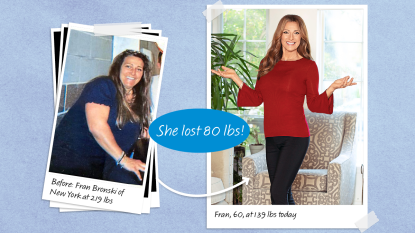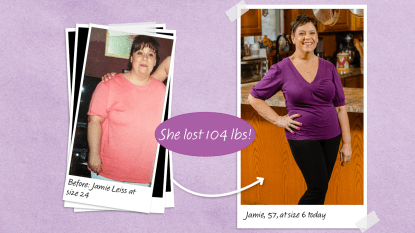How to Develop Healthy Habits in 6 Easy Steps
Change is good.

Research shows that 43 percent of our behavior happens on autopilot. Here, experts Wendy Wood, Ph.D., and author of Good Habits, Bad Habits: The Science of Making Positive Changes That Stick ($13.99, Amazon), B.J. Fogg, Ph.D., who is the founder and director of the Stanford Behavior Design Lab, and Susan Weinschenk, Ph.D., author of How to Get People to Do Stuff ($29.19, Amazon) and adjunct professor at the University of Wisconsin, tell you how to develop healthy habits using six methods that will allow you to break free of old patterns and invite change that sticks!
1. Set Your Stage
Instead of trying to change yourself, the much more effective first step would be to tweak your surroundings, observes Wood, a USC professor of psychology and business, “Modifying the world around us sets us up for success,” she says. If you want to eat healthier, for example, you’d do well to replace the candy bowl on your counter with a bowl full of fruit. “Once in place, the forces in our environment help us achieve our goals.”
2. Shrink Your Goals
Start with the smallest version of the routine you’re trying to adopt, urges Tiny Habits: The Small Changes That Change Everything ($16.80, Amazon) author Fogg. “About 75 percent of people who start with tiny habits make them automatic within five days.”
If you’ve resolved to exercise more, begin by taking one lap around the block. Then add something to make it fun, like, say, listening to a great podcast only while you work out, Fogg suggests. Making things easier on ourselves helps us to cement new habits.
3. Piggyback Onto Old Habits
A powerful strategy proven to spark change is called “habit stacking,” or attaching a new habit to an old one, reveals chief behavioral scientist Weinschenk. “I wanted to get into the habit of drinking more water, so I simply placed a glass next to my toothbrush to cue me to drink more every time I brushed my teeth,” she explains. Piggybacking a new behavior onto an old one is shown to hardwire new habits in as little as one week.
4. Spark Change Contagion
One small shift can trigger a ripple effect of change, says Wood, who cites in one study in which more than a third of people who told stories of successful new habits mentioned a change in their environment, such as moving to a new place. That’s because shaking things up gets our brain out of autopilot mode, helping us to adopt new routines. But you don’t have to move to get the same results. Simply trying a new coffee shop or making a new friend can shift your perspective, making it easier to break out of old routines.
5. “Check Off” Success
When we reward ourselves with, say, a latte for keeping up with a new habit, it becomes dependent on that incentive — when the reward goes away, so does the behavior, reveals Weinschenk. The better motivator? Get out a calendar and check it off each time you complete the new habit. “Our brain craves feedback,” she says. “When our mind recognizes a pattern— in this case, several check marks — it wants to continue that pattern, facilitating lasting change.”
6. Boost Self-Belief
If a new habit isn’t sticking, ask yourself what the underlying belief is that may be keeping you tethered to old behaviors, urges Weinschenk. A common self-sabotaging script? “I’m just not good at change.” “Rewrite your narrative with a more positive spin, such as, ‘I’m ready to try something new,’ she suggests.This is proven to spur you to try again and write your next chapter.”
This story originally appeared in our print magazine.













